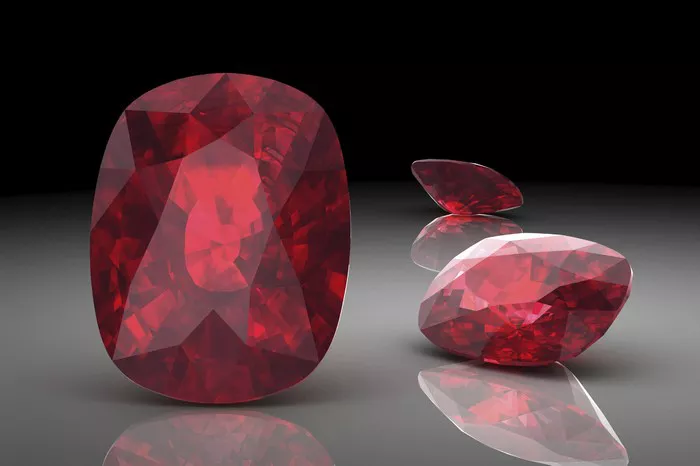Rubies are renowned for their vibrant red color, rarity, and exceptional beauty. As one of the most coveted gemstones in the world, rubies have captivated the hearts of collectors, jewelers, and enthusiasts for centuries. However, not all rubies are created equal, and the quality of these precious gemstones can vary depending on their geographic origin. In this article, we’ll explore where the best quality rubies come from and what sets them apart from other sources.
Introduction to Rubies
Rubies are a variety of the mineral corundum, which is composed of aluminum oxide. The characteristic red color of rubies is caused by the presence of chromium within the crystal structure. While rubies can occur in various shades of red, from pinkish-red to deep crimson, the most prized specimens exhibit a vivid, intense hue known as “pigeon’s blood” red.
Throughout history, rubies have been associated with wealth, power, and passion. Ancient civilizations prized rubies for their supposed mystical properties and believed that wearing rubies could protect the wearer from harm and bring good fortune. Today, rubies continue to hold a special place in the world of gemstones, admired for their rarity, durability, and timeless beauty.
Factors Affecting Ruby Quality
Several factors contribute to the quality and value of rubies, including color, clarity, cut, and carat weight. Let’s take a closer look at each of these factors:
Color: The color of a ruby is the most crucial factor in determining its quality and value. The most desirable rubies exhibit a rich, intense red hue with undertones of blue or purple. Stones with a pure, vivid red color are highly prized and often command premium prices in the market. Rubies with slight secondary hues, such as pink or orange, may also be valuable, depending on the intensity and distribution of the color.
Clarity: Like all gemstones, rubies can contain internal characteristics known as inclusions. While some inclusions are acceptable and may even be expected in rubies, stones with excellent clarity and transparency are more valuable. Eye-clean rubies with minimal visible inclusions are highly sought after and command higher prices than heavily included stones.
Cut: The cut of a ruby can greatly impact its appearance and overall beauty. Well-cut rubies exhibit brilliance, sparkle, and a pleasing symmetry that enhances their visual appeal. Popular cuts for rubies include oval, cushion, and emerald cuts, although other fancy shapes may also be available. A high-quality cut can maximize the stone’s color, minimize any potential color zoning or extinction, and create an attractive play of light within the gemstone.
Carat Weight: As with other gemstones, the size of a ruby can significantly affect its value. Larger rubies are rarer and thus more valuable than smaller stones. However, the price per carat tends to increase exponentially as the carat weight of the ruby increases, meaning that larger stones can be significantly more expensive on a per-carat basis.
Where Do the Best Quality Rubies Come From?
The quality of rubies can vary depending on their geographic origin, with certain regions known for producing exceptional specimens. Let’s explore some of the world’s most renowned ruby-producing areas:
Burma (Myanmar): Burma, now officially known as Myanmar, has long been considered the premier source of high-quality rubies. The Mogok Valley in northern Myanmar is particularly famous for its “pigeon’s blood” rubies, prized for their intense red color and exceptional clarity. Rubies from Burma often exhibit a fluorescent red glow under ultraviolet light, adding to their allure and mystique. However, political and social unrest in Myanmar has led to restrictions on the export and sale of Burmese rubies in recent years, contributing to their scarcity and high prices in the market.
Thailand: Thailand is another significant producer of rubies, with the majority of its production coming from mines in the Chanthaburi and Trat provinces. Thai rubies are known for their deep red color, clarity, and excellent transparency. While Thai rubies may not always reach the same level of intensity as Burmese rubies, they are still highly prized for their beauty and quality. Thailand also has a well-established gemstone cutting and trading industry, making it a hub for the global ruby market.
Mozambique: In recent years, Mozambique has emerged as a significant source of high-quality rubies, particularly from the Montepuez region in the northern part of the country. Mozambican rubies are known for their rich, saturated color and excellent clarity, rivaling those from traditional sources such as Burma and Thailand. The discovery of large ruby deposits in Mozambique has increased the availability of fine-quality rubies in the market and provided an alternative to more expensive options.
Other Sources: In addition to Burma, Thailand, and Mozambique, rubies are also found in other parts of the world, including Sri Lanka, Madagascar, and Tanzania. While these sources may not produce rubies of the same caliber as those from Burma or Thailand, they still contribute to the global supply of gem-quality rubies.
Conclusion
In conclusion, the best quality rubies typically come from regions with a long history of ruby mining and a reputation for producing exceptional specimens. Burma (Myanmar), Thailand, and Mozambique are among the world’s most renowned sources of high-quality rubies, prized for their intense color, clarity, and transparency. While the availability of these top-quality rubies may be limited due to factors such as political instability and environmental regulations, they continue to command premium prices in the gemstone market. Regardless of their origin, rubies remain a symbol of luxury, passion, and timeless beauty, captivating gemstone enthusiasts and collectors around the world.


